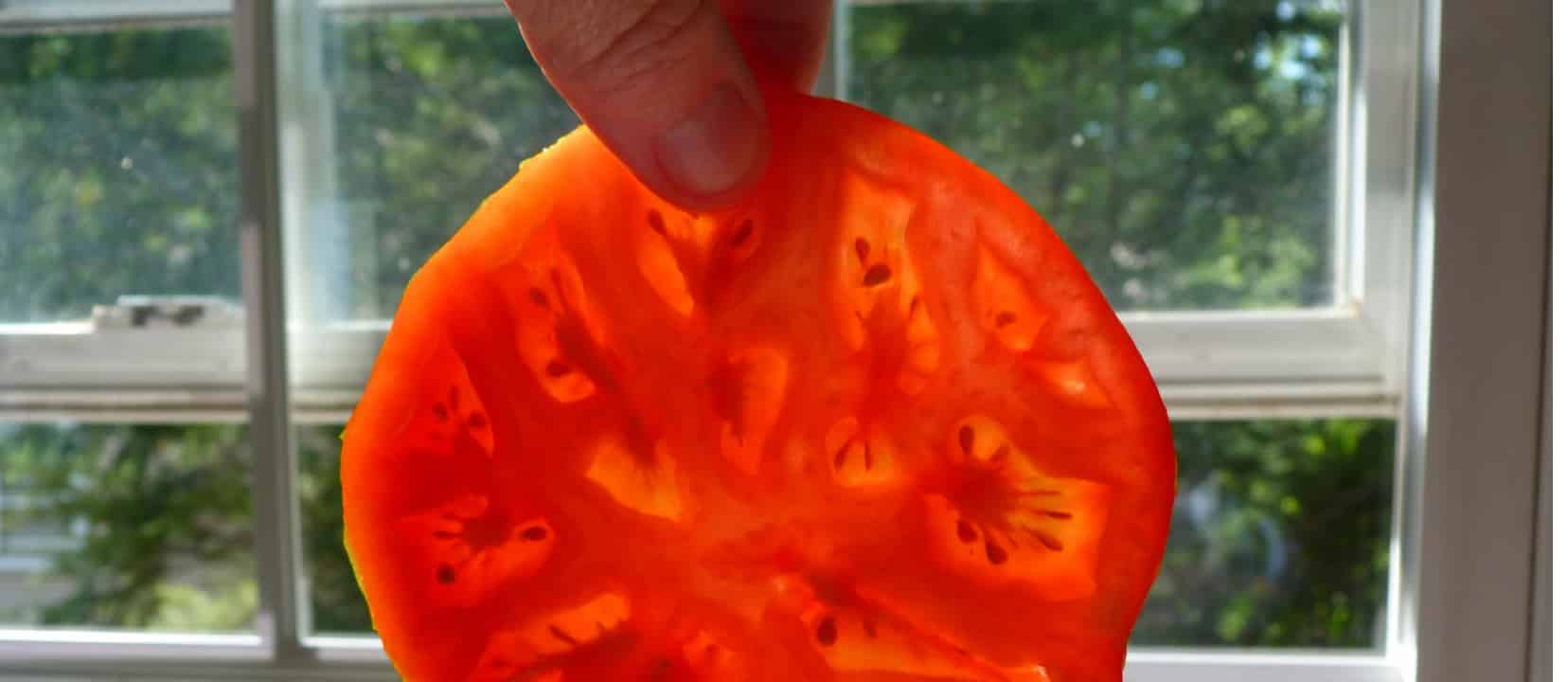In the prevention of cardiovascular disease, the consumption of fruits and vegetables is crucial. Preventing the oxidation of cholesterol may be one of the mechanisms by which fruits and vegetables reduce the risk of heart attacks and strokes. However, hyperactivity of platelets is also critically important in the pathogenesis of cardiovascular disease, as I’ve covered before (See Inhibiting Platelet Aggregation with Berries).
In recent years, it has been shown that platelets are not only involved in the arterial clotting process, but also that they play an active role in the inflammatory process of atherosclerosis from childhood. By the end of our teens, atherosclerotic lesions are present in most people living in industrialized societies; and so, suppressing the over-activity of platelets may be beneficial not only for heart disease, but for cancer, allergies, and diseases for which inflammation plays a major role.
The antioxidant properties of fruits and veggies are well known. However, their anti-clotting effects on platelets are less known. Preliminary studies have demonstrated the platelet activation suppressing activity of a variety of fruits and vegetables. They suppress platelet activation so well that they can actually mess up platelet function tests. And, the effects are so long-lasting that fasting the morning of your blood test may not be sufficient.
Out of 16 different fruits tested, tomatoes came out number one. The anti-platelet activation components in tomatoes are water soluble, so we don’t have to eat them with fat; heat stable, meaning we can cook tomatoes without losing the benefits; and concentrated in the yellow fluid around the seeds. This is why tomato pomace beat out tomato juice, sauce, or ketchup. Pomace is basically the seeds and the peel, which the industry throws away, and it may be the healthiest part. And, the more tomato seeds, the better. But this study was measuring platelet activation in a petri dish. Grapefruit came in number two here, and grapefruit juice at least didn’t appear to help when people actually drank it. Would drinking tomato juice actually help?
Platelets of patients with diabetes are characterized by intensified activation; so, 20 diabetics were asked to drink a daily cup of tomato juice for three weeks or a tomato-flavored placebo beverage, and there was a significant drop in platelet activation.
A study done by the Rowett Research Institute, highlighted in my video, Inhibiting Platelet Activation with Tomato Seeds, found this works in healthy people as well. Within three hours of consumption, two tomatoes lowered platelet activation, and six tomatoes worked even better. Also, the effects were more wide-ranging than those of aspirin, in that the tomatoes targeted multiple pathways of platelet activation.
About one in four people are aspirin resistant, meaning aspirin doesn’t work to calm down their platelets, whereas only 3% of study subjects were found to be tomato resistant.
This finding indicates an advantage of the tomato extract’s broad antiplatelet activity profile over single-target drugs such as aspirin. Also, when researchers stuck tubes into people while they were eating tomatoes, they found no changes in blood clotting times, implying that supplementation with tomatoes should not result in a prolonged bleeding times; so, one might get the best of both worlds: less platelet activation without the bleeding risk. But, if tomatoes don’t thin our blood, do they work?
Researchers out of North Carolina State University report that, “consumption of tomato products has been found to be protectively correlated with a lower incidence of acute coronary events, less development of early atherosclerosis, and lower mortality from heart disease.”
If you don’t like tomatoes, kiwifruit recently beat them out in a test tube study of platelet activation. Strawberries may help too, but we have data showing kiwis may actually work in people, and two kiwis appeared to work just as well as three kiwis. It appears to work for green-on-the-inside kiwifruit, and for yellow-on-the-inside kiwifruit. In this case, though, one a day seemed to help, whereas two-a-day did not, which seems a little strange. And, there haven’t been any studies to see if kiwifruit eaters actually have fewer strokes and heart attacks; so, the best evidence for a dietary intervention to decrease platelet activation currently rests with tomatoes.
One of my favorite videos, The Tomato Effect, is actually not about tomatoes at all, but talks about the power of a diet composed entirely of plants to combat the heart disease epidemic. After all, Heart Disease Starts in Childhood.
I do have some others that really do touch on tomatoes, though:
- The Fruit Whose Juice is Healthier
- Preventing Strokes with Diet
- Enhanced Athletic Recovery Without Undermining Adaptation
More on kiwis here:
In health,
Michael Greger, M.D.
PS: If you haven’t yet, you can subscribe to my free videos here and watch my live year-in-review presentations Uprooting the Leading Causes of Death, More Than an Apple a Day, From Table to Able, and Food as Medicine.
